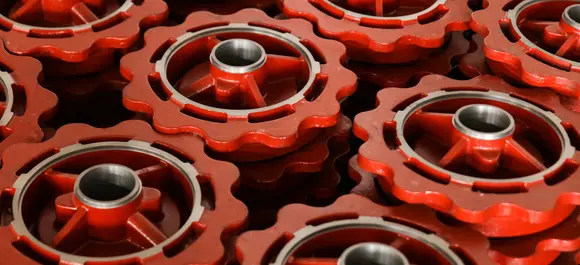Mobile:+86-311-808-126-83
Email:info@ydcastings.com
Aluminium Pressure Die Casting Techniques and Applications in Modern Manufacturing
The Benefits and Applications of Aluminium Pressure Die Casting
Aluminium pressure die casting is a highly efficient and cost-effective manufacturing process that has transformed the way we produce metal components. This method involves forcing molten aluminium under high pressure into a reusable metal mold, known as a die. The result is a strong, lightweight, and precise metal part that can be produced in large quantities, making it an essential process in various industries.
Advantages of Aluminium Pressure Die Casting
One of the primary benefits of aluminium pressure die casting is its excellent dimensional accuracy. The pressure at which the molten aluminium is injected into the mold ensures that it fills every cavity and detail of the die, resulting in parts that require minimal secondary processing. This precision not only reduces waste but also shortens lead times, allowing manufacturers to respond rapidly to market demands.
Another significant advantage is the inherent properties of aluminium. Aluminium is known for its lightweight nature, which is crucial in industries such as automotive and aerospace where reducing weight can lead to improved fuel efficiency and performance. Additionally, aluminium has excellent corrosion resistance compared to other metals, making it suitable for components exposed to harsh environments.
The process also supports complex geometries and intricate designs, which are often challenging to achieve with other manufacturing methods. This capability opens the door to innovation, enabling designers and engineers to create advanced products that may include complex internal structures or thin walls without compromising strength.
Moreover, aluminium pressure die casting is highly scalable. Once the initial setup is complete, the production can be ramped up to meet high-volume demands. This scalability makes it particularly attractive for manufacturers looking to balance cost with production capacity. Furthermore, since the dies are reusable, the long-term cost of production decreases significantly, leading to a more sustainable operation.
aluminium pressure die casting

Applications Across Industries
Aluminium pressure die casting is used in a wide array of industries, demonstrating its versatility. In the automotive sector, components such as engine blocks, transmission cases, and structural parts benefit immensely from the lightweight and strong attributes of aluminium die casting. These components contribute to the overall performance of vehicles while adhering to stringent safety and quality standards.
In the aerospace industry, where weight and reliability are paramount, aluminium die cast products are used for aircraft components including housings, brackets, and frames. These parts not only help reduce the overall weight of the aircraft but also provide the necessary strength to withstand the harsh operating conditions of flight.
Moreover, the electronics industry utilizes aluminium pressure die casting in the production of housings for various devices, providing durability and protection for delicate components. The ability to incorporate complex designs also allows for better thermal management, effectively dissipating heat in electronic applications.
The consumer goods industry is not left behind either, where sleek and aesthetically pleasing aluminium components are used in products ranging from kitchen appliances to furniture. The appealing finish of die-cast aluminium allows for a variety of surface treatments, enhancing both function and design.
Conclusion
Aluminium pressure die casting is a highly effective technique that combines precision, efficiency, and versatility. Its applications span several industries, contributing to the production of lighter, stronger, and more intricate components than traditional methods would allow. As technology advances and demands for innovative solutions grow, aluminium pressure die casting will continue to play a pivotal role in modern manufacturing, driving progress and enhancing product performance across various sectors. With its inherent advantages, it remains a cornerstone in the quest for efficient and sustainable production processes.
-
Why Should You Invest in Superior Pump Castings for Your Equipment?NewsJun.09,2025
-
Unlock Performance Potential with Stainless Impellers and Aluminum End CapsNewsJun.09,2025
-
Revolutionize Your Machinery with Superior Cast Iron and Aluminum ComponentsNewsJun.09,2025
-
Revolutionize Fluid Dynamics with Premium Pump ComponentsNewsJun.09,2025
-
Optimizing Industrial Systems with Essential Valve ComponentsNewsJun.09,2025
-
Elevate Grid Efficiency with High-Precision Power CastingsNewsJun.09,2025











